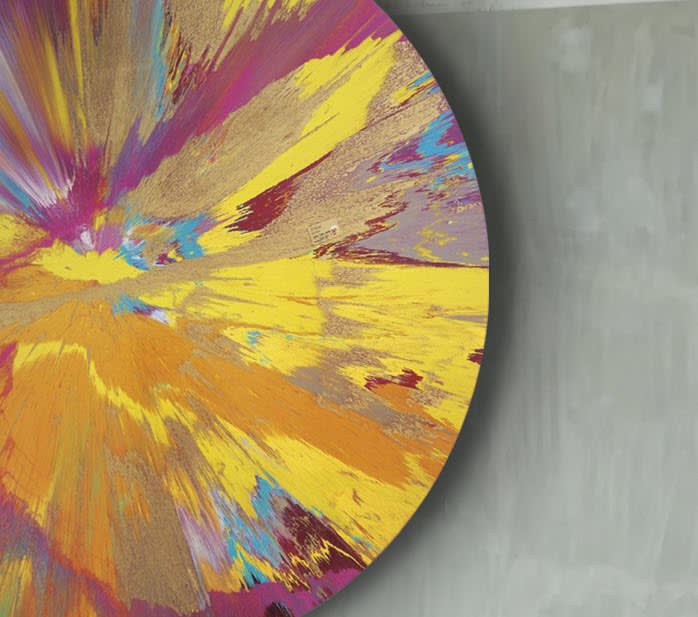
By integrating credit cards into his paintings, Damien Hirst confronts the pervasive culture of consumerism that dominates contemporary society. Credit cards are symbols of financial transactions, instant gratification, and the constant pursuit of material possessions. Hirst's inclusion of these objects in his art draws attention to the mechanisms of capitalism, encouraging viewers to question their own relationship with money and materialism.
Hirst's incorporation of credit cards in works such as our 'Beautiful I Don't Want to be a Dead Art, 2005', sheds light on the complex relationship between wealth and art. The art world often intersects with the world of high finance, where the value of an artwork can skyrocket to exorbitant prices. By physically embedding credit cards in his paintings, Hirst challenges the notion of art as a commodity and confronts the commodification of creativity itself.
Another aspect of Hirst's credit card paintings lies in the choice of canvas. By using credit cards as a surface for his art, he subverts the traditional notion of a canvas as a blank slate waiting to be filled. The credit cards themselves become an integral part of the artwork, carrying their own history and symbolism. They serve as a reminder that art is not divorced from the realities of the world but rather influenced by the cultural, economic, and social contexts in which it exists.
Provoking Dialogue and Reflection: As with much of Damien Hirst's work, his credit card paintings are intended to provoke dialogue and stimulate critical thinking. By utilizing unconventional materials and challenging established norms, he encourages viewers to question the values and systems that underpin contemporary art and society as a whole.
To discuss available Damien Hirst paintings for sale call +44 (0)20 7581 1244 or email sales@andipa.com